okaki
Okaki: Learn All About the Amazing Rice Cracker!

Sophia Wasylinko
Posted on February 29, 2024
Share:
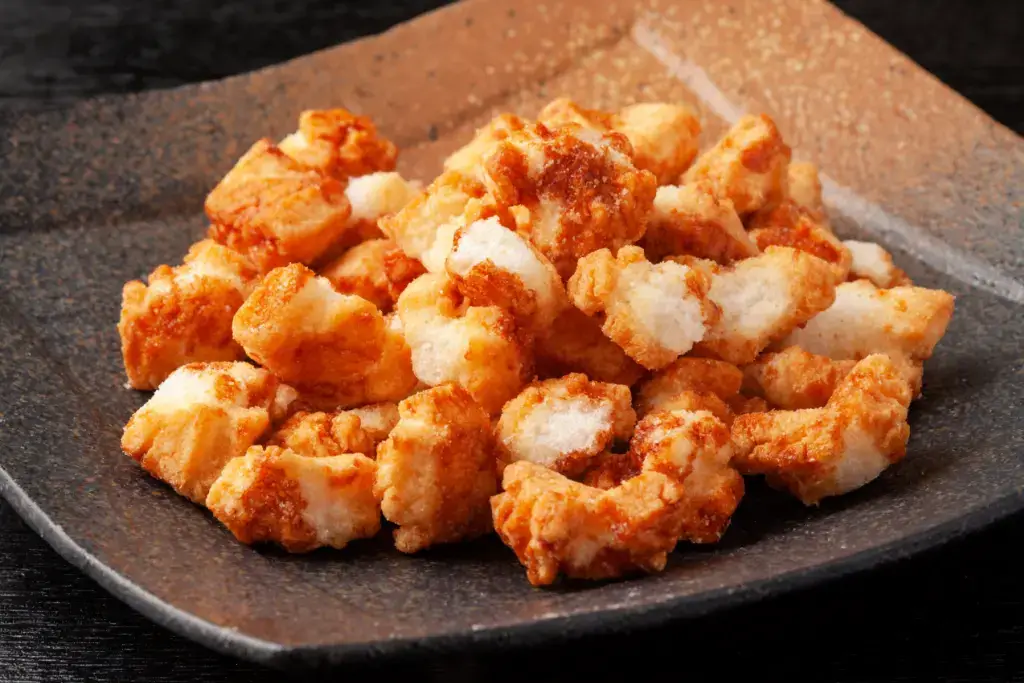
Okaki is one of the most treasured traditional Japanese snacks. Its simple appearance, crunchy texture, and addictive taste create a combination that has captured Japanese people’s love (and taste buds) for centuries. We’ll examine this humble snack, look at the ingredients and cooking methods, and share where you can buy it for yourself. Join us as we learn all about okaki, the excellent rice cracker.
What is okaki?
Okaki is one of several popular beika (Japanese rice crackers). People sometimes confuse it with senbei and arare. Moreover, okaki uses mochigome (glutinous rice), while Senbei uses koshikari rice (short-grain). And unlike arare, which is small and round, okaki is big and flat. All three of these Japanese snacks are delicious in their way.
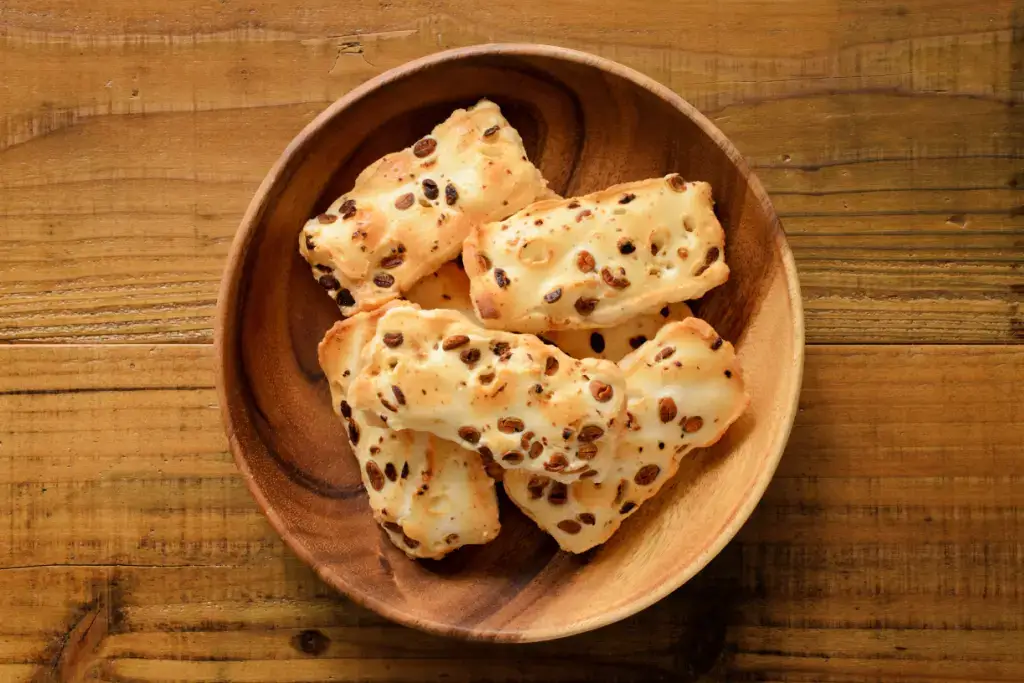
This snack is made in several steps. First, steamed or fried rice is pounded and dried thoroughly for up to a week. Then, the dried mochi is shaped and deep fried (or baked for a healthier option) in shoyu (soy sauce), sprayed with oil, and left to dry again. This process gives the crackers a crunchy, crispy texture, making them light and airy.
These rice crackers are easy to recreate at home using mochi rice cakes from your local grocery store or Asian supermarket. Next, add seasonings, including sesame seeds, sea salt, curry, and nori (seaweed). They can be made in large quantities and easily stored for long periods, perfect for school lunches or long commutes.
Where did it come from?
Surprisingly, okaki and other beika have roots in China. Specifically, they originated from the pancake jianbing, first made during the Han dynasty (202 BCE to 220 CE). The snacks came to Japan soon after but became popular around the Edo period (1603-1868). Hailing from Sōka in Saitama Prefecture, senbei is one of Japan’s first modern rice crackers.
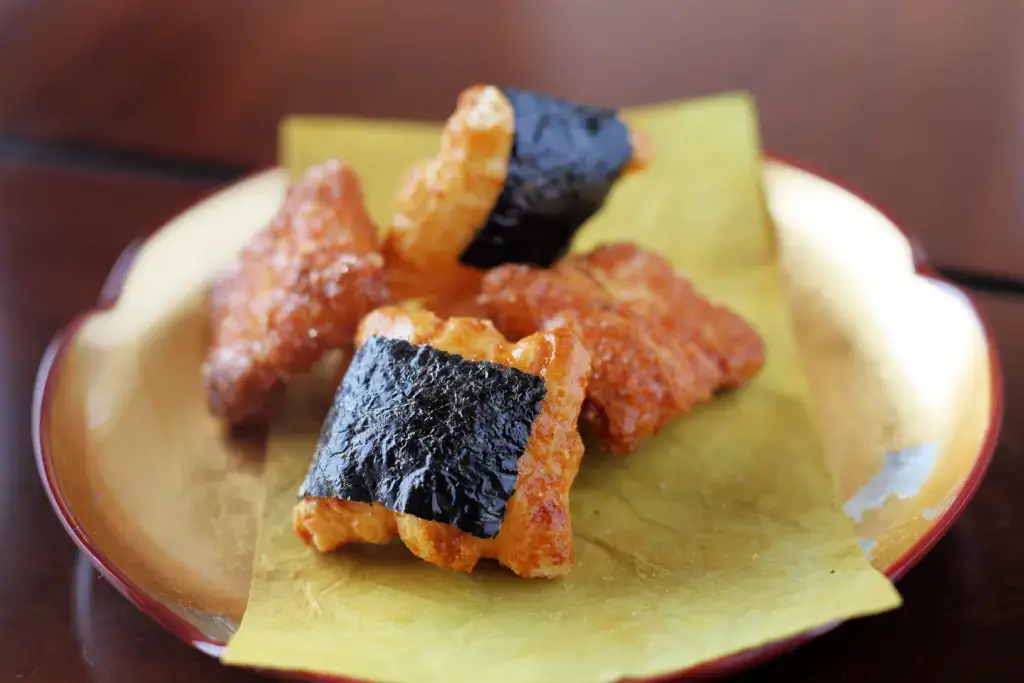
The specifics of Okaki need to be better known. Instead, we can look at the timeline of Japanese snack companies that make the rice cracker. Businesses like Osami Rice Cracker in Asakusa, Tokyo, have been using the same recipe for generations, keeping the tradition alive and unchanged (albeit with the help of modern technology).
Beika is a common snack with green tea, beer, and other alcoholic drinks. However, it can also be eaten as part of a meal. Besides the simple recipe with its range of possible flavors, okaki rice crackers are considered a healthier option than other Japanese snacks since they’re lower in calories and sodium. However, they lack fiber and other necessary vitamins, which might cause weight gain if they overeat.
Where can I find this rice cracker in Japan?
Okaki rice crackers are an accessible snack, especially for tourists looking for something to munch on while traveling inside Japan or returning home. You can easily buy them and other Japanese snacks at local grocery stores, souvenir shops, and transportation hubs. They can also be found outside of Japan in Asian food aisles or Asian supermarkets.

However, the best place to buy okaki is the shops where people make rice crackers on-site. Examples include Osami Rice Compan, Akasaka Kakizan in Tokyo, and Moriyama Seijibe in Chiba Prefecture. You can even make your rice cracker at Meisui-no-Sato Nikko Okaki Factory in Tochigi Prefecture!
You will also find okaki and other Japanese snacks sold at booths during summer festivals and cultural events. Light and crispy, they complement cool drinks and heavier meal items perfectly. Okaki bought here, which is more meaningful for the people who consume them thanks to the cultural significance of these events.
Are you looking for amazing snacks like okaki? Check out Sakuraco! Sakuraco sends traditional Japanese snacks, teas, sweets, and kitchenware so you can taste Japanese culture in the comfort of your home!
Why should I try okaki?
Its simplicity and versatility
Okaki is a versatile snack that can be enjoyed on its own, as part of a meal, or with a cup of green tea. It’s also easy to make at home, adjusting the recipe to one’s own tastes. As mentioned before, it can be kept for weeks at a time, so these Japanese snacks are an excellent option for school, work, or travel.
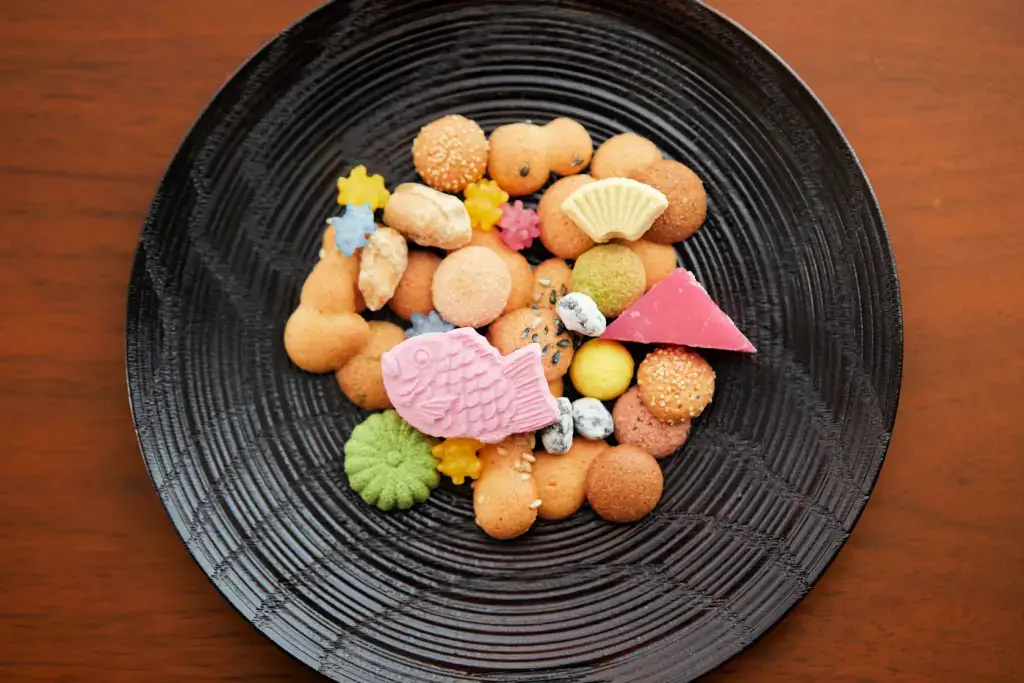
A (slightly) healthier option
These rice crackers contain some health benefits due to the ingredients and cooking methods. Baking instead of frying and adding herbs or spices will make them even more nutritious and delicious. Again, however, we must remind readers that they will be enjoyed in moderation.
Keeping the tradition alive
Finally, buying okaki rice crackers supports local and family-owned businesses that have made and sold okaki for generations. You allow them to continue sharing their art and knowledge with customers—locals and foreigners—for years. Have you tried okaki rice crackers before? What are some other Japanese snacks that people should try? Tell us in the comments below.

Discover authentic flavors with Sakuraco
Get Sakuraco 

Discover authentic flavors with Sakuraco
Get Sakuraco 
Related Articles

Japan Christmas Traditions: Best Luxury Dinners in 2025!
Finding a memorable Christmas dinner in Japan can range from relaxed hotel buffets to refined multi-course experiences. Celebrating over dinner is considered a classic alongside other Christmas traditions, such as KFC.

Aaron and Claire Make the Best Japanese Comfort Food: Yakisoba
If you’re craving something quick, satisfying, and full of flavor, Aaron and Claire have you covered. In this video, Aaron shares how to make yakisoba, a simple Japanese stir-fried noodle dish that’s easy to cook and incredibly addictive. Forget the instant packs or greasy takeout, this homemade version is fresh, flavorful, and the kind of…
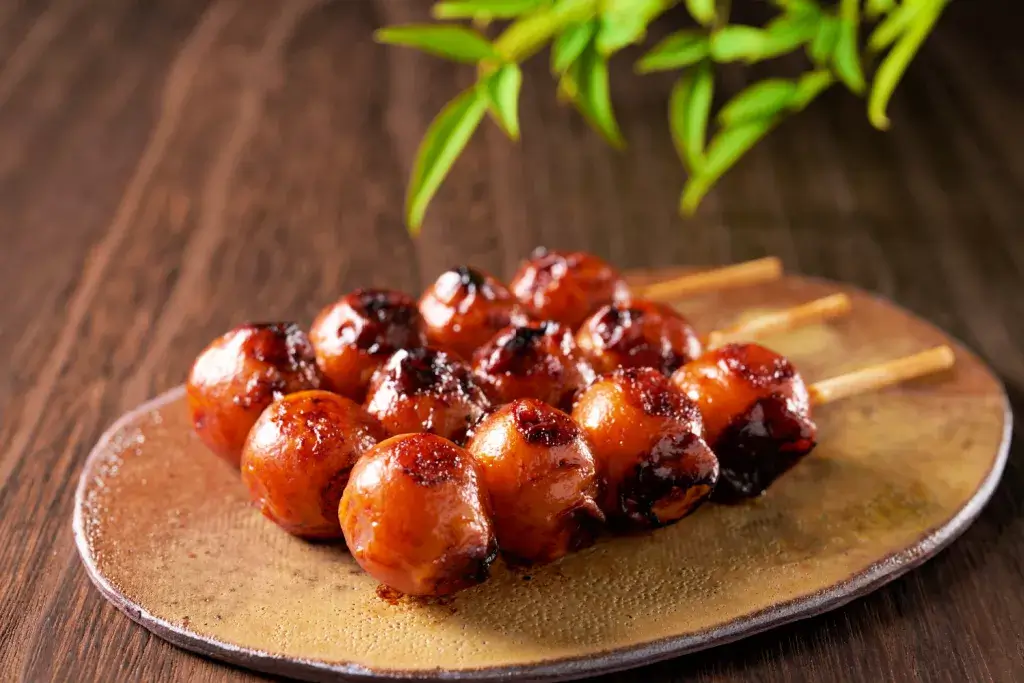
Mitarashi Dango: Japan’s Sweet and Savory Rice Treat
If you’ve ever visited Japan or seen photos of its food, you might have spotted little rice dumplings on a stick. These chewy treats are called mitarashi dango, and they’re one of Japan’s most beloved traditional sweets.

Wasanbon from Shikoku: Japan’s Most Delicate Sugar
Shikoku is the smallest of Japan’s four main islands, a peaceful region renowned for its scenic beauty and tranquil lifestyle. It’s also home to a special kind of sugar that perfectly reflects this relaxed way of life — wasanbon.



